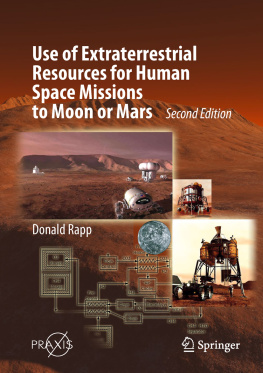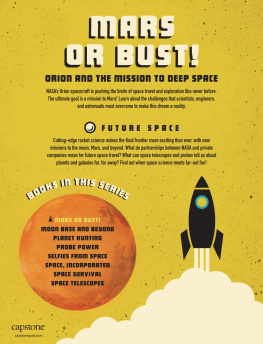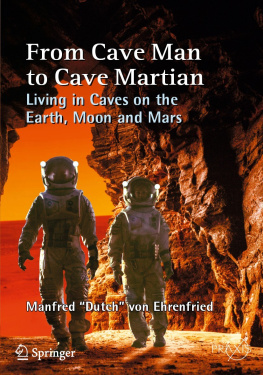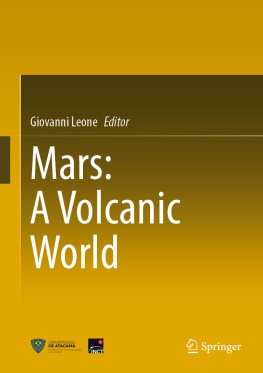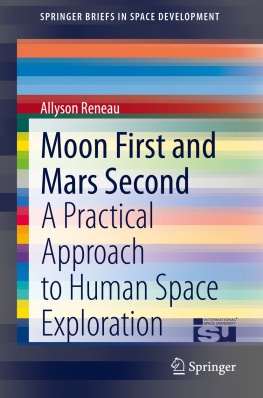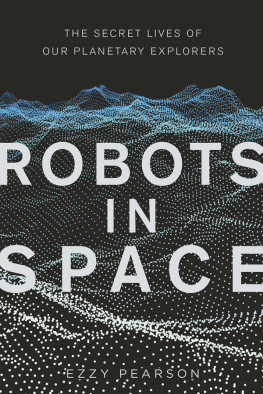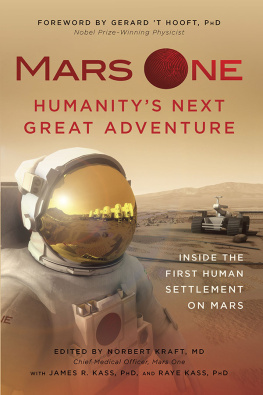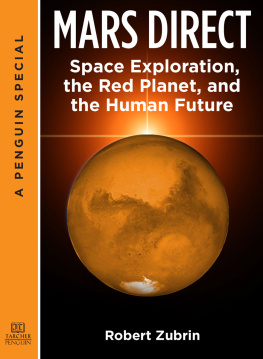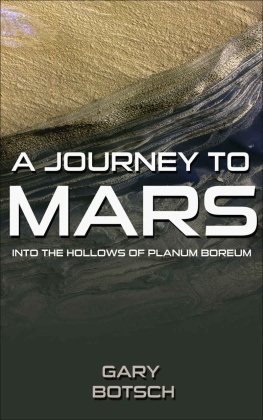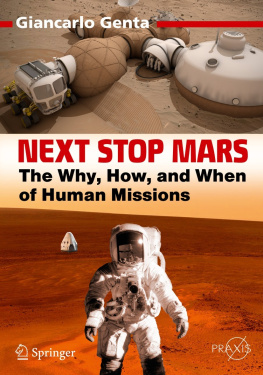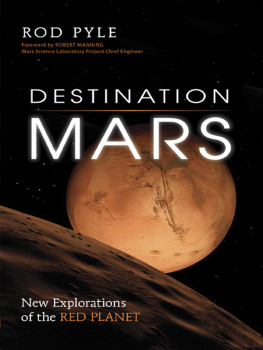1.1.1 Background
Portree (2001) wrote a superb history of mission planning for sending humans to Mars as of year 2000.
According to Portree:
More than 1000 piloted Mars mission studies were conducted inside and outside NASA between about 1950 and 2000. Many were the product of NASA and industry study teams, while others were the work of committed individuals or private organizations.
Starting with von Brauns vision of the 1950s, many attempts were made to define a feasible human mission to Mars. Development of nuclear thermal propulsion (NTP) began in the 1950s and 1960s. In 1968, Boeing published a fairly detailed design of a human mission to Mars making extensive use of NTP. The Boeing 1968 study set a high bar for extraordinary detail in analysis of the many subsystems and components needed for a human mission to Mars. The lengthy report is replete with detailed tables and illustrations. It is unfortunate that many subsequent studies failed to come close to clearing that bar. Mission concepts continued to appear through the 1970s and 1980s. In the 1990s, NASA produced Design Reference Missions DRM-1 and DRM-3 that became the original standard bearers for Mars mission planning. These DRMs introduced ISRU, and continued to rely on NTP. In the same time frame, Zubrin developed the Mars Direct concept and a group at Caltech developed the Mars Society Mission concept. In 2005, NASA published a summary of an extensive mission study known as DRA-5, but detailed backup for this summary does not seem to be available. In 2014, NASA announced the Evolvable Mars Campaign (EMC). However the EMC seems to be based on vague and ephemeral plans, with a lack of detailed engineering calculations. It will likely end up being scrapped for good reasons, as NASA moves on to its next long-range plan. After 60+ years of planning, we still dont have a credible plan for a human mission to Mars. Meanwhile, Elon Musk continues to put out nonsensical dreams of Mars colonization to a gullible media in his periodic press releases.
Rapp (2015) amplified and updated Portrees history of planning for human missions to Mars. In this chapter, I will not reiterate that entire history, but instead I will proceed to more recent studies with particular emphasis on the role of In Situ Resource Utilization (ISRU).
One of the major factors that will determine the cost and logistic feasibility of a human mission to Mars is the number of heavy-lift launches of materiel will be required, as well as the complexity of logistics of on-orbit assembly, if needed. This is characterized in terms of the Initial Mass in Low Earth Orbit (IMLEO). Oddly enough, the way to estimate IMLEO begins at the end points of the mission:
How much mass must be lifted from the Mars surface to rendezvous in Mars orbit?
How much mass must be delivered from LEO to the Mars surface?
How much mass must be delivered from LEO to Mars orbit?
How much mass must be returned from Mars orbit to Earth orbit?
How much mass must be returned from Earth orbit to Earth?
The contribution to IMLEO from each of the above mass transfers is the mass transferred, multiplied by its appropriate gear ratio. The total IMLEO is a sum of these contributions. A gear ratio is the ratio of the initial mass at the starting point to the final delivered mass for any transfer of payload. For example, if it requires say, 4 initial mass units to transfer one mass unit to its destination, the gear ratio for that transfer is four. My rough estimate for the gear ratio for M1 is roughly 56. That is, it takes 56 mass units on the surface to deliver 1 mass unit of payload to rendezvous in elliptical Mars orbit. The gear ratio M2 for dry cargo is approximately 10. For crew, it is undoubtedly much larger. For cryogenic propellants it is anyones guess. My wild guess is that to deliver 1 mass unit of cryogenic propellant from LEO to the Mars surface, the gear ratio is something like 16:1. The overall gear ratio from LEO to the surface of Mars, and from the Mars surface to Mars orbit is thus at least 500. It is evident that minimizing the total mass delivered to the Mars surface is important. Even more important is minimizing the mass of the ascent system from Mars to rendezvous in orbit since it has such a large gear ratio. That is why ISRU is so valuable, since it produces ascent propellants on Mars. The masses delivered to Mars and lifted from the Mars surface are strongly dependent on the crew size. That is why crew size is the most important single factor in determining the scale of a human mission to Mars.
1.1.2 The Likely Mars Mission Scenario
Any mission to Mars is constrained by the following:
Starting at any given time when the Earth and Mars are juxtaposed in some relative position, we can fast-forward approximately 25.62 months.
During this period of time, the Earth has made two transits around the Sun and is now 1.62 months further along its orbit than it was at the start.
Mars made one transit around the Sun and is now 3.05 months further along its orbit.
But 1.62 Earth months is about 48.6 along its orbit while 3.08 Mars months is 48.6 along its orbit.
Thus the relative positions repeat themselves roughly every 25.6 months, but the actual positions have moved roughly 49 forward along the orbits.
Thus we conclude that the position of Mars relative to the Earth is at a propitious distance for transfer from Earth to Mars roughly once every 25.6 months.
If a spacecraft leaves Earth and takes say, 7 months to get to Mars, by the time it arrives at Mars, the Earth has moved halfway around the Sun and no return is feasible.
The Earth moves back into a position for transfer from Mars to Earth about 24 months after the initial transfer from Earth to Mars.
Thus a Mars mission time line might be something like:
Month 1: Send spacecraft toward Mars
Month 7: Arrive at Mars
Months 823: Remain at Mars
Month 24: Depart Mars for Earth
Month 30: Return to Earth.
Thus the crew must remain on Mars for about 16 months. There is no way to abort the mission.
Returning from Mars imposes stringent requirements. The crew must be housed in a suitable habitat for about seven months, life support must be provided without interruption, and large amounts of propellant are needed for transfers. Liftoff from the surface of Mars requires a large mass of propellants, proportional to the liftoff mass. If the mission plan was to rise off the surface of Mars and go directly back to Earth, the entire mass of habitat plus life support would have to be lifted from Mars and sufficient impulse applied to send it on its way toward Earth. The amount of propellants required would exceed 100 metric tons (mT). The scale of the propulsion system for the return vehicle would be huge. The volume of the propellants would exceed 120 m3, requiring more than 27 tanks of 2-m diameter. Instead, a sizable Earth Return Vehicle (ERV) is placed in Mars orbit containing the habitat for the seven-month journey back to Earth, along with the life support system. A very minimal capsule is used to transport the crew from the surface of Mars to rendezvous and transfer to the ERV in a couple of days. Even with this minimal capsule, the requirement for ascent propellants will be at least 30 mT.

